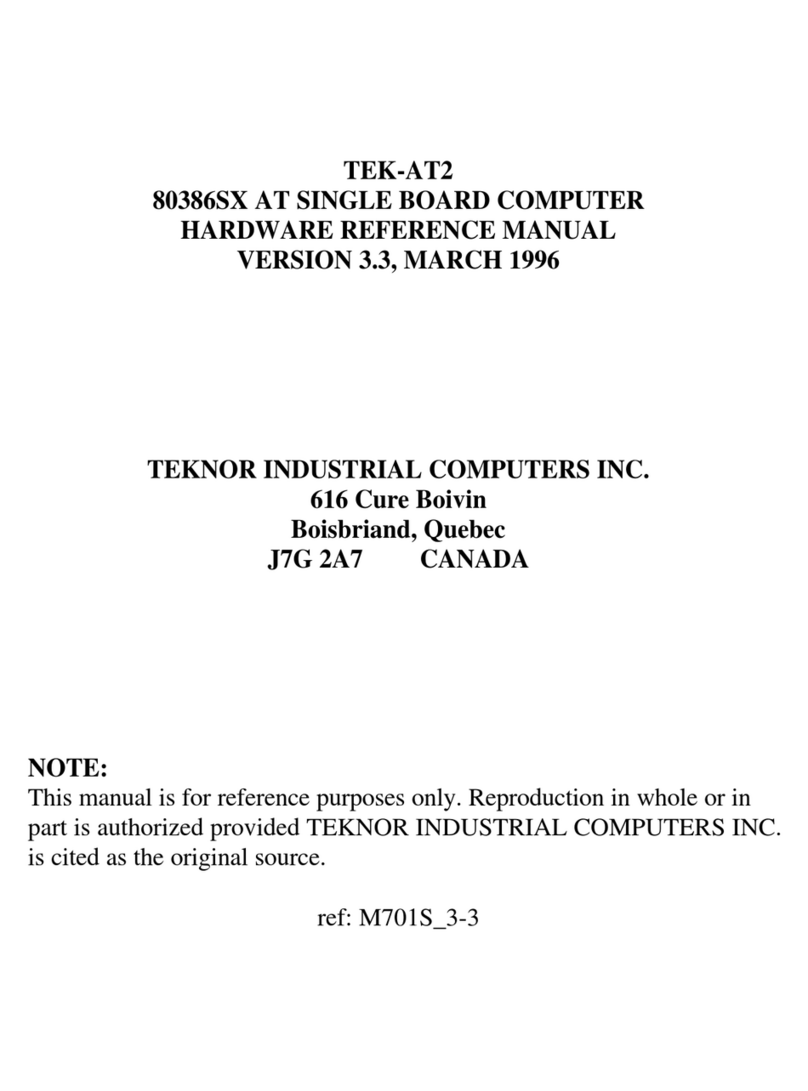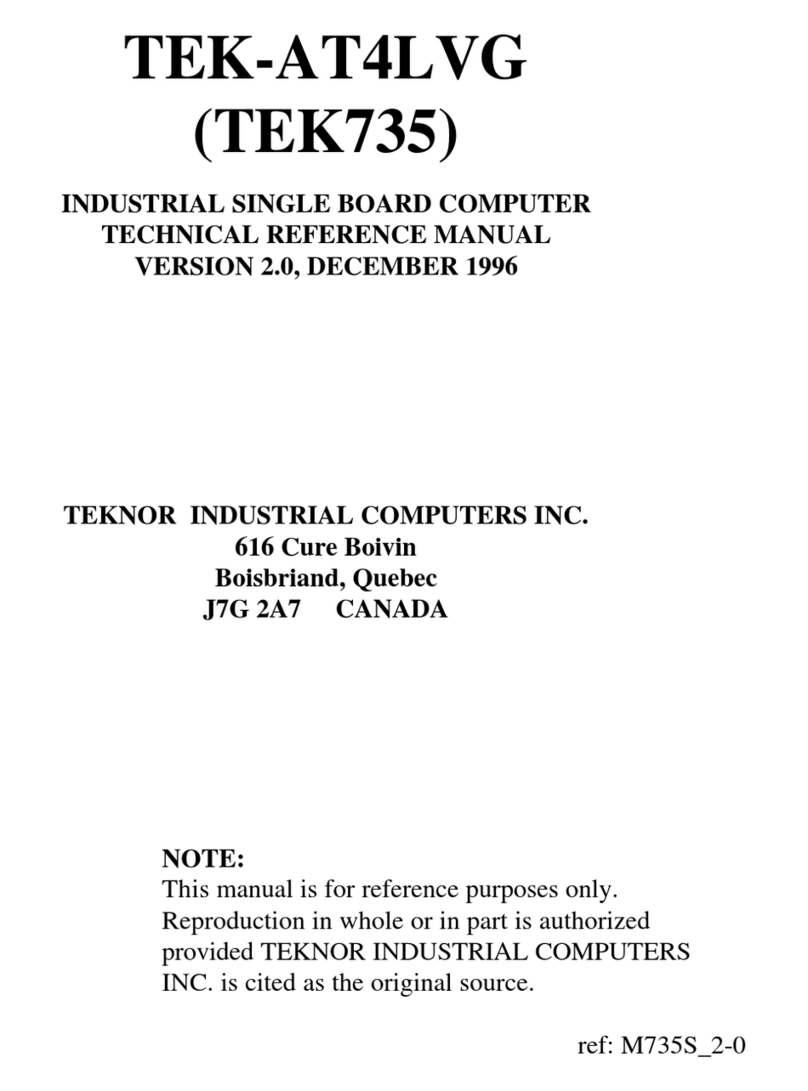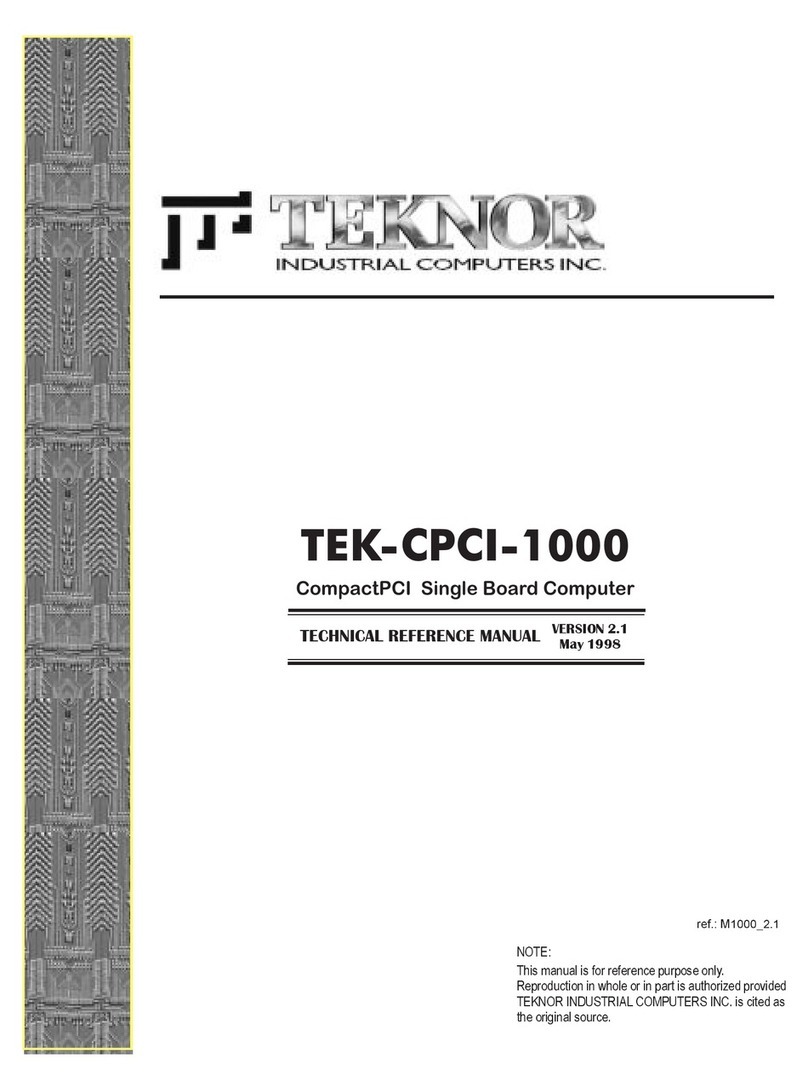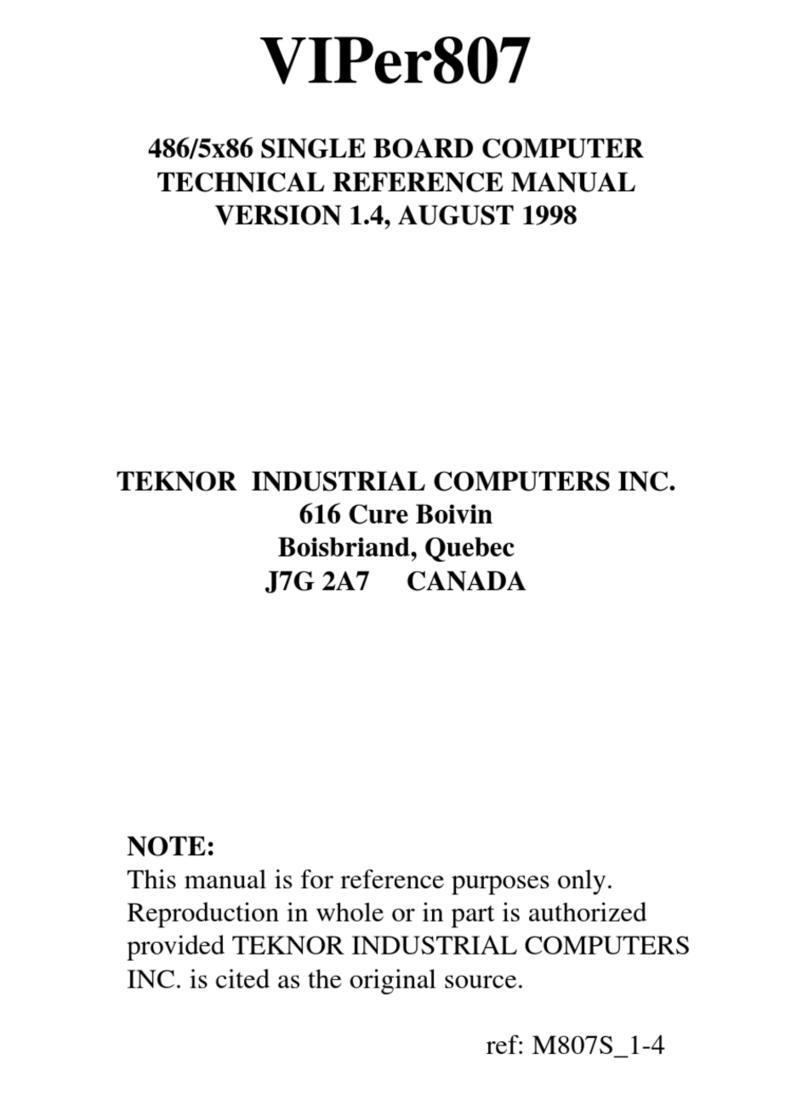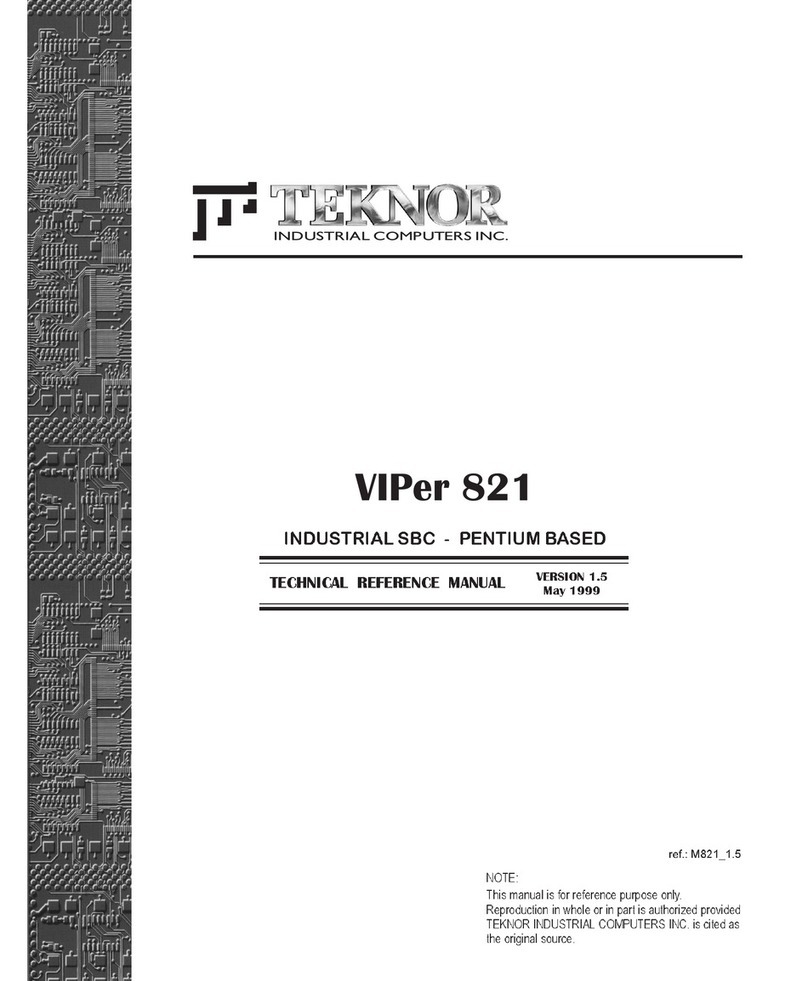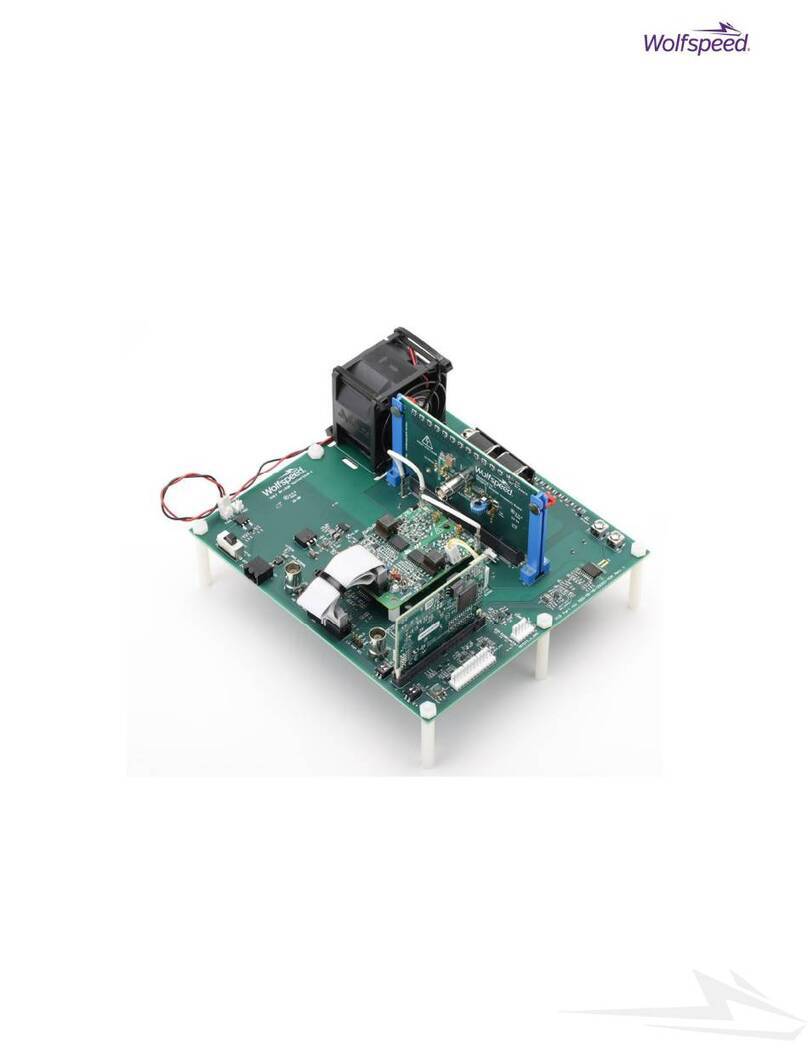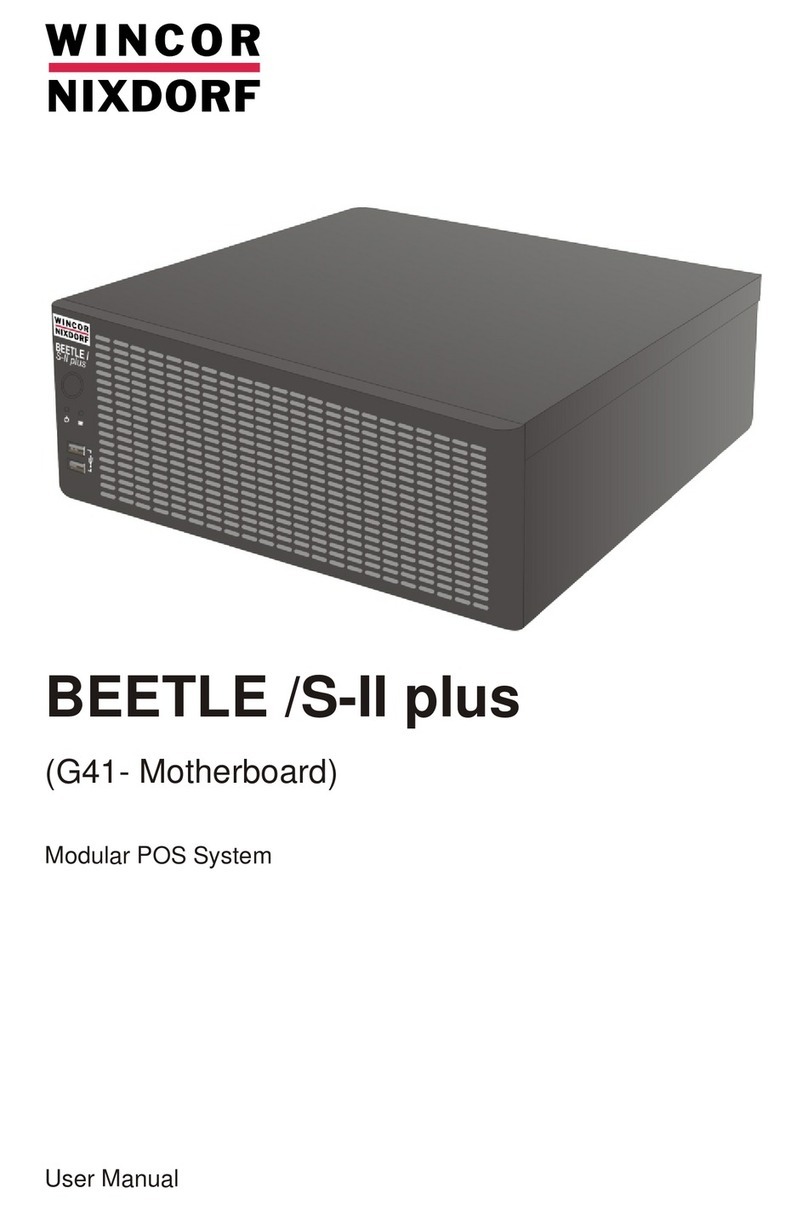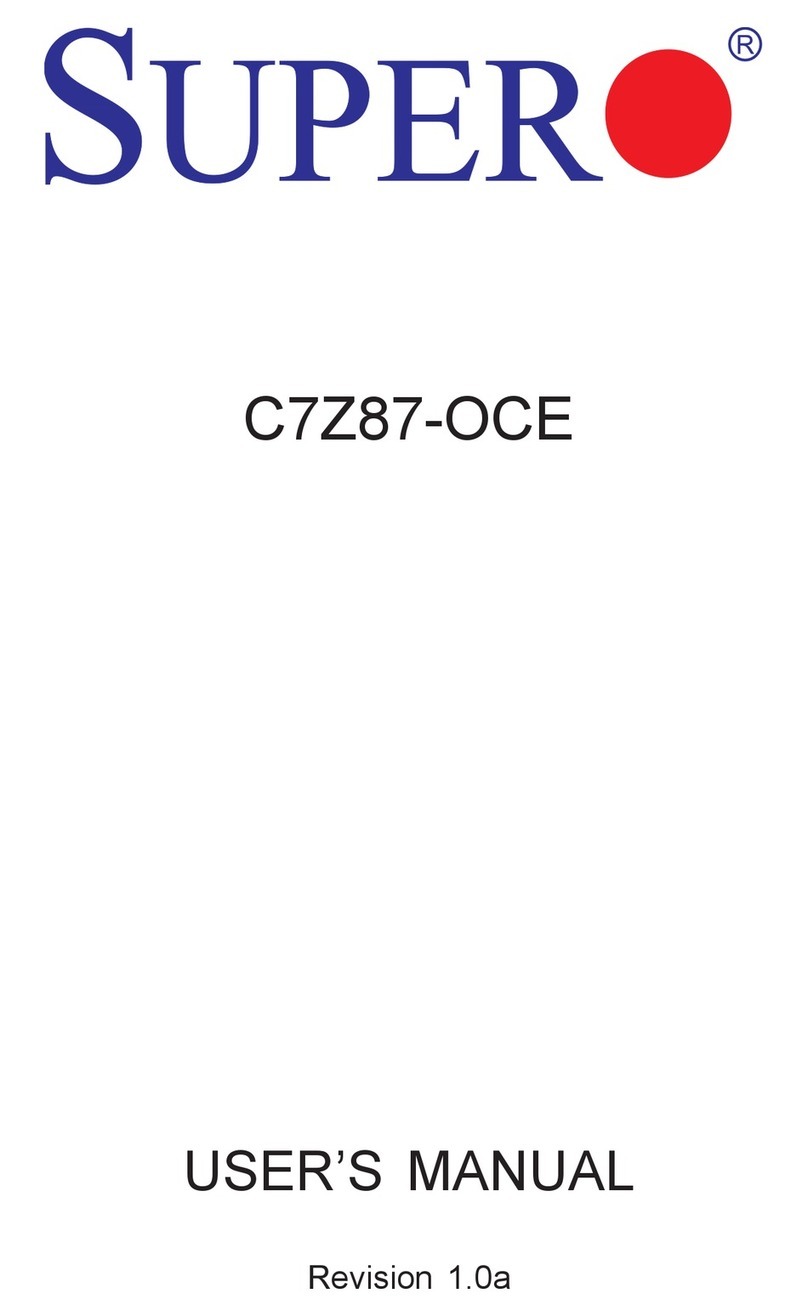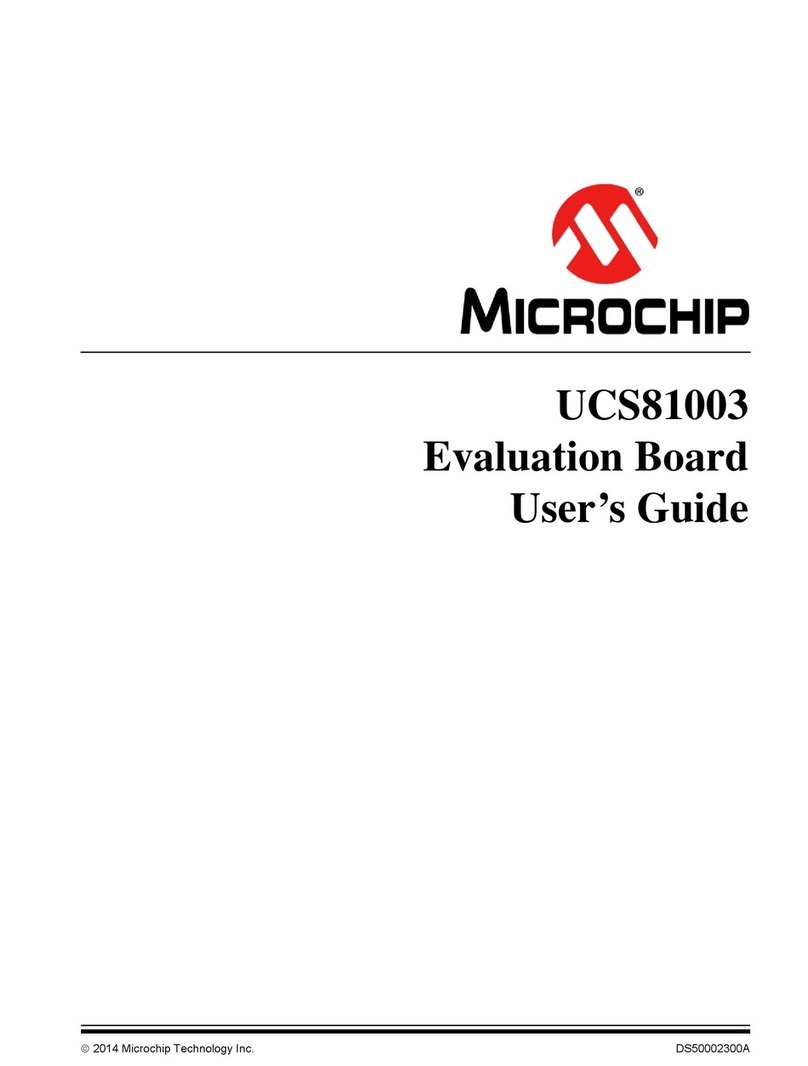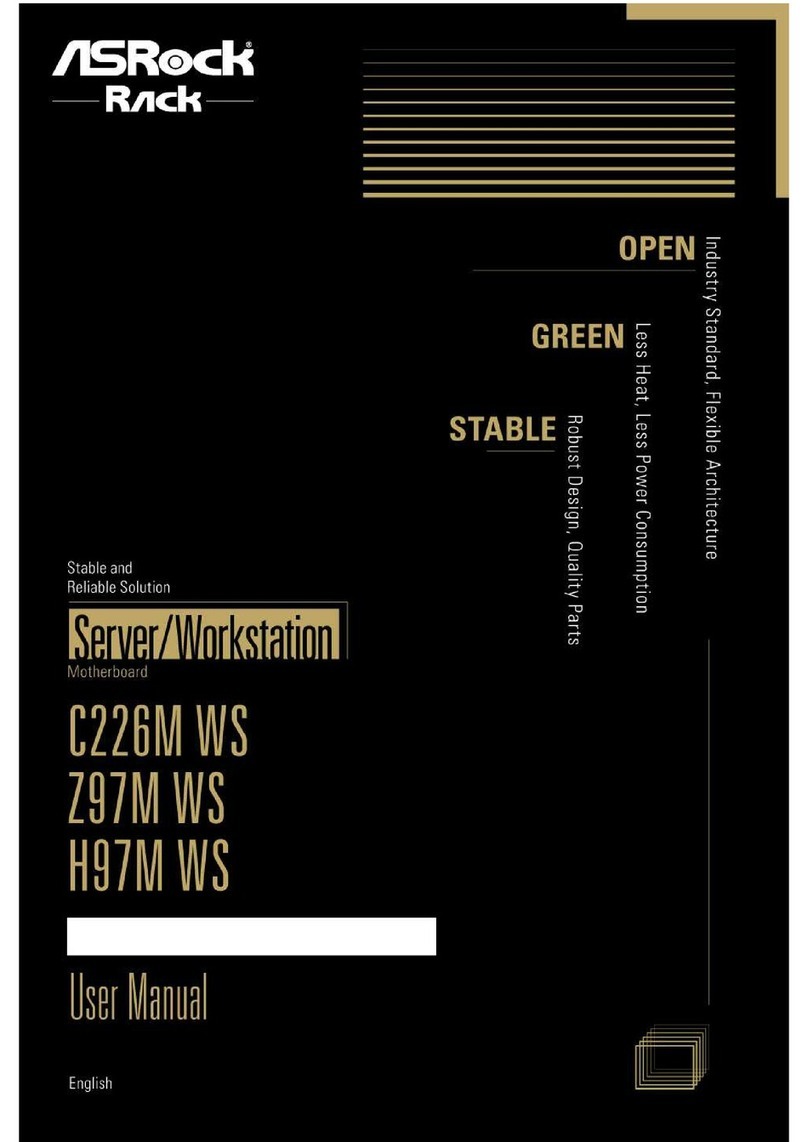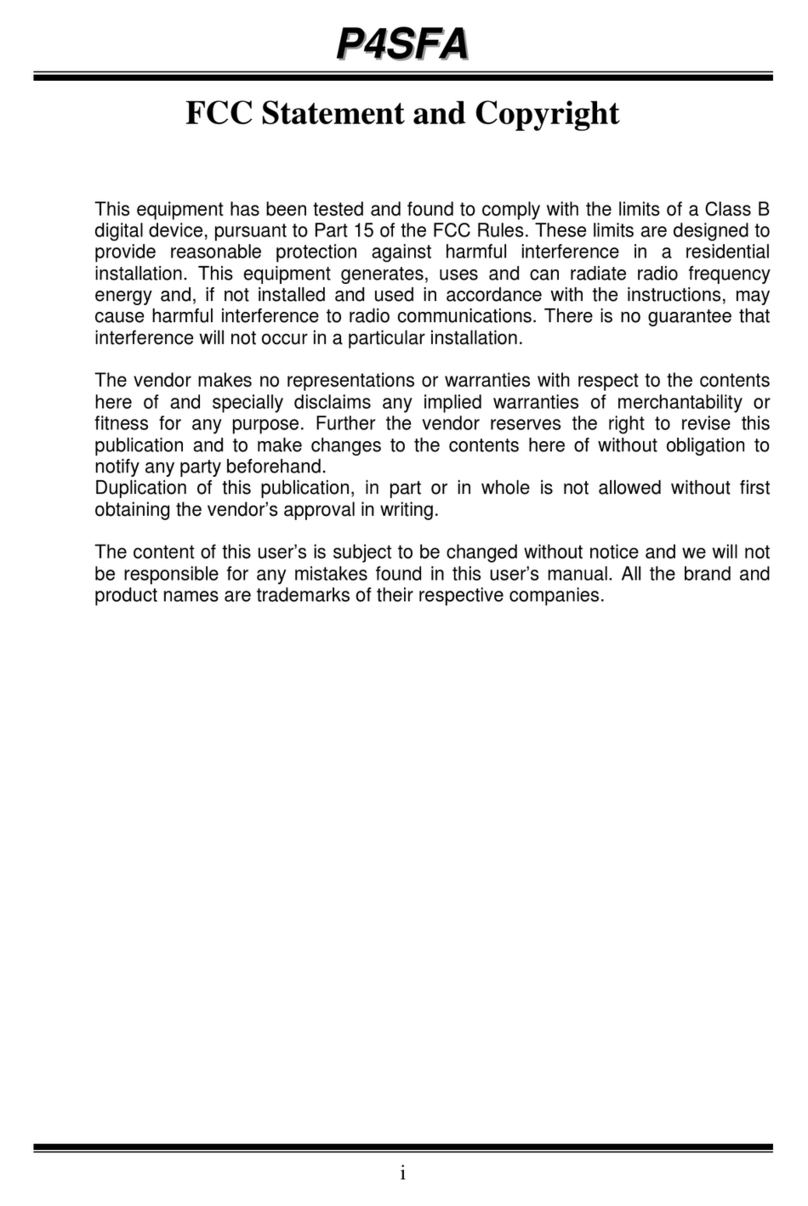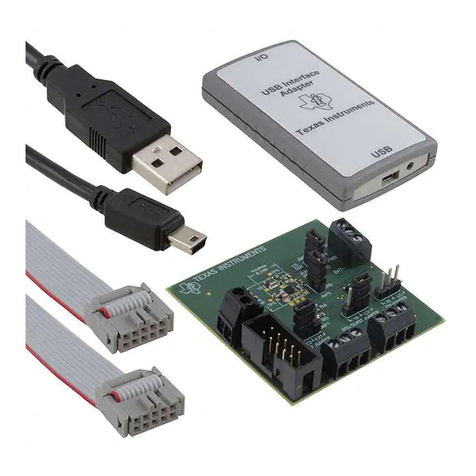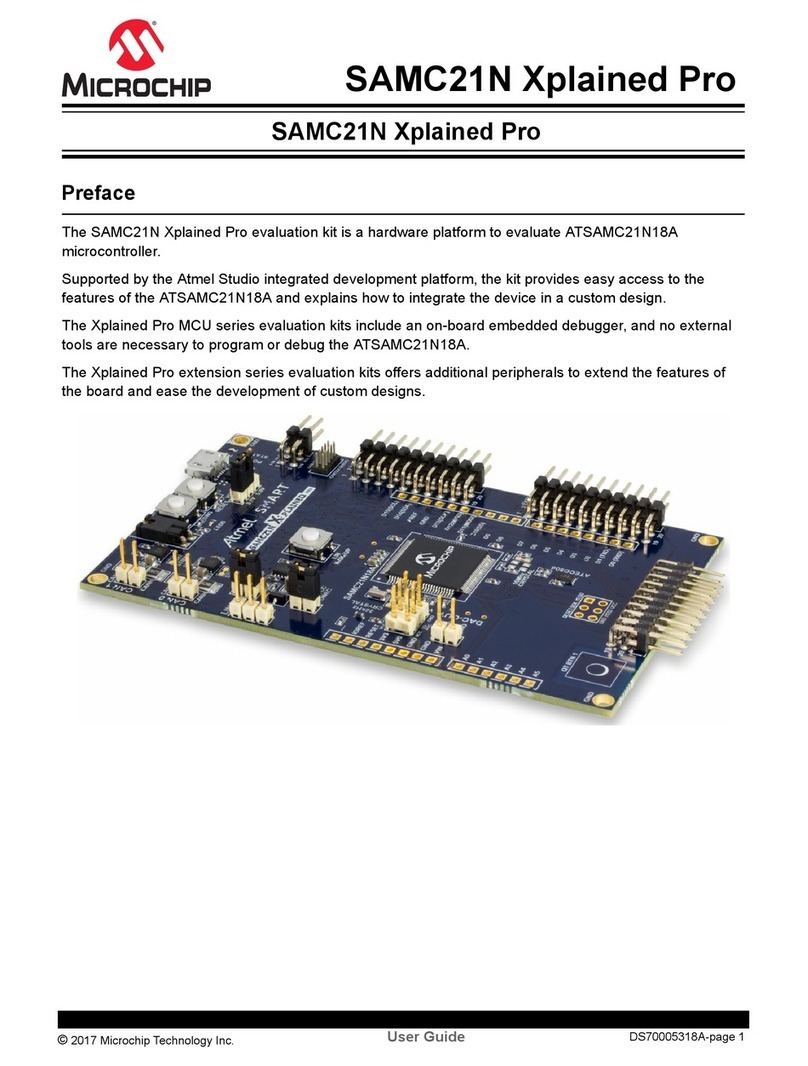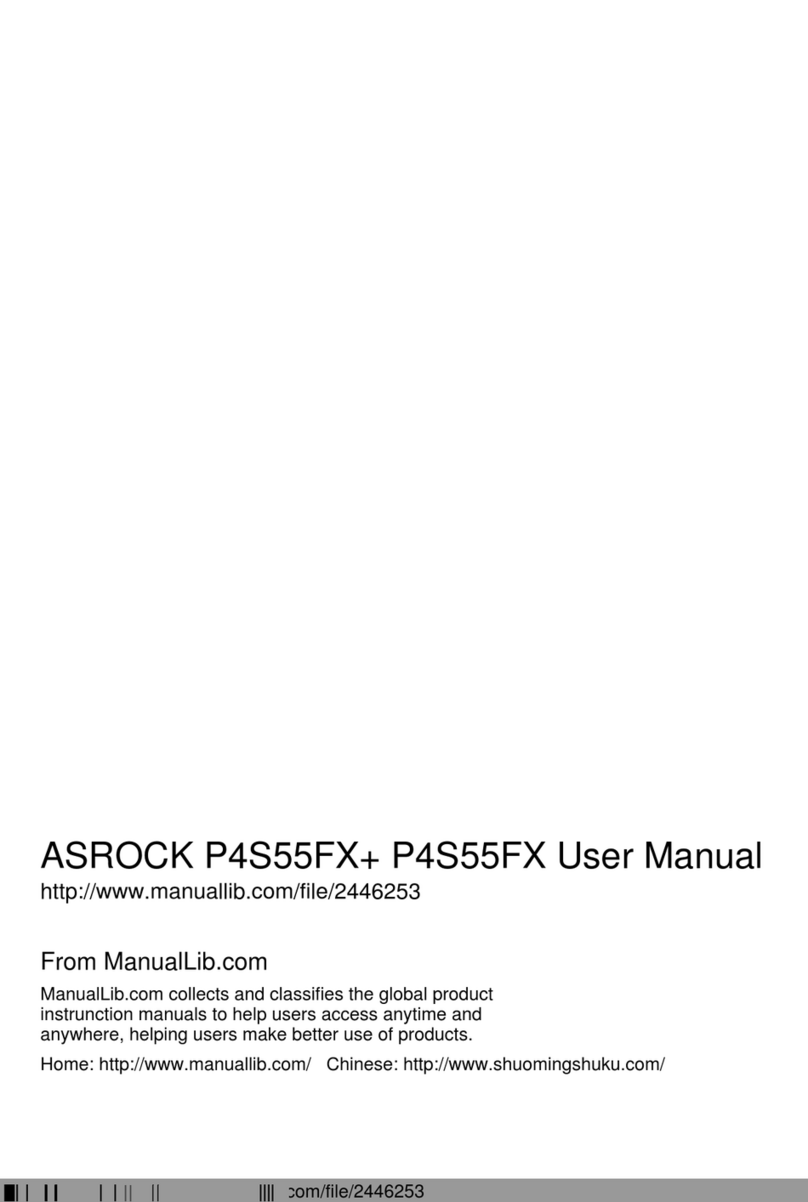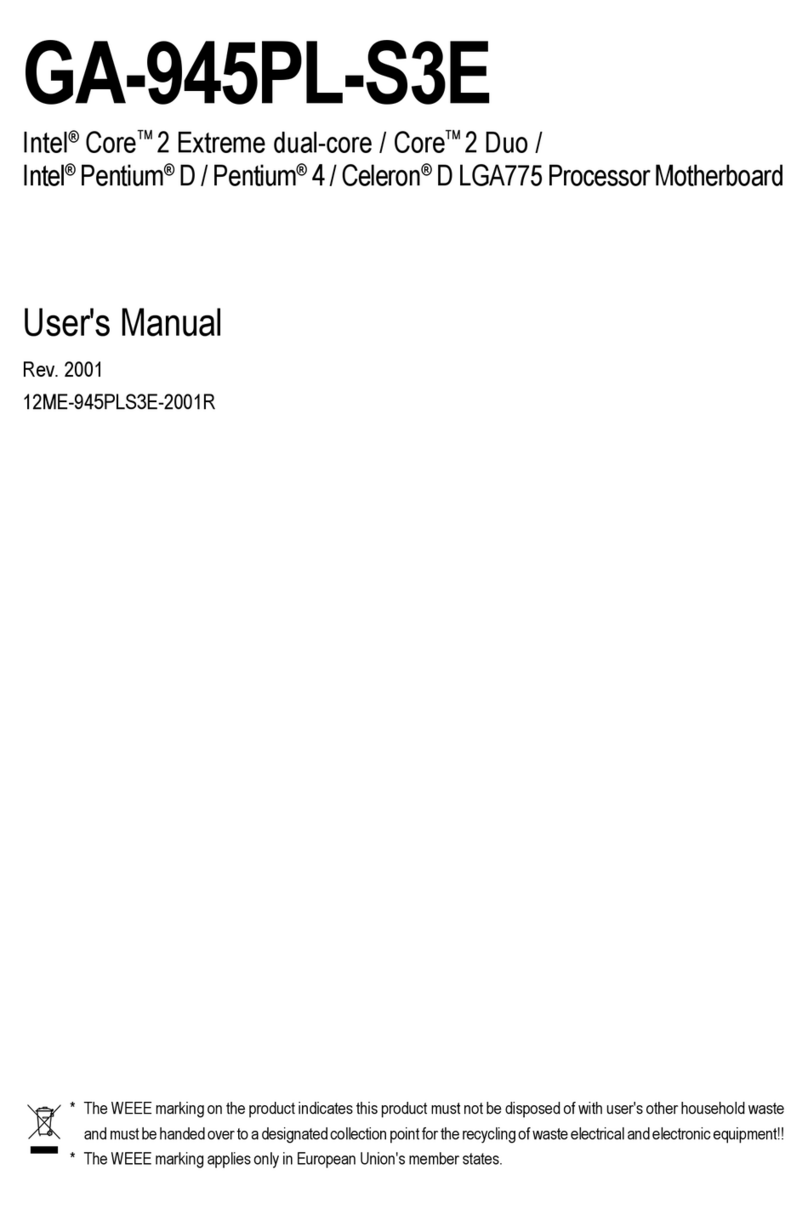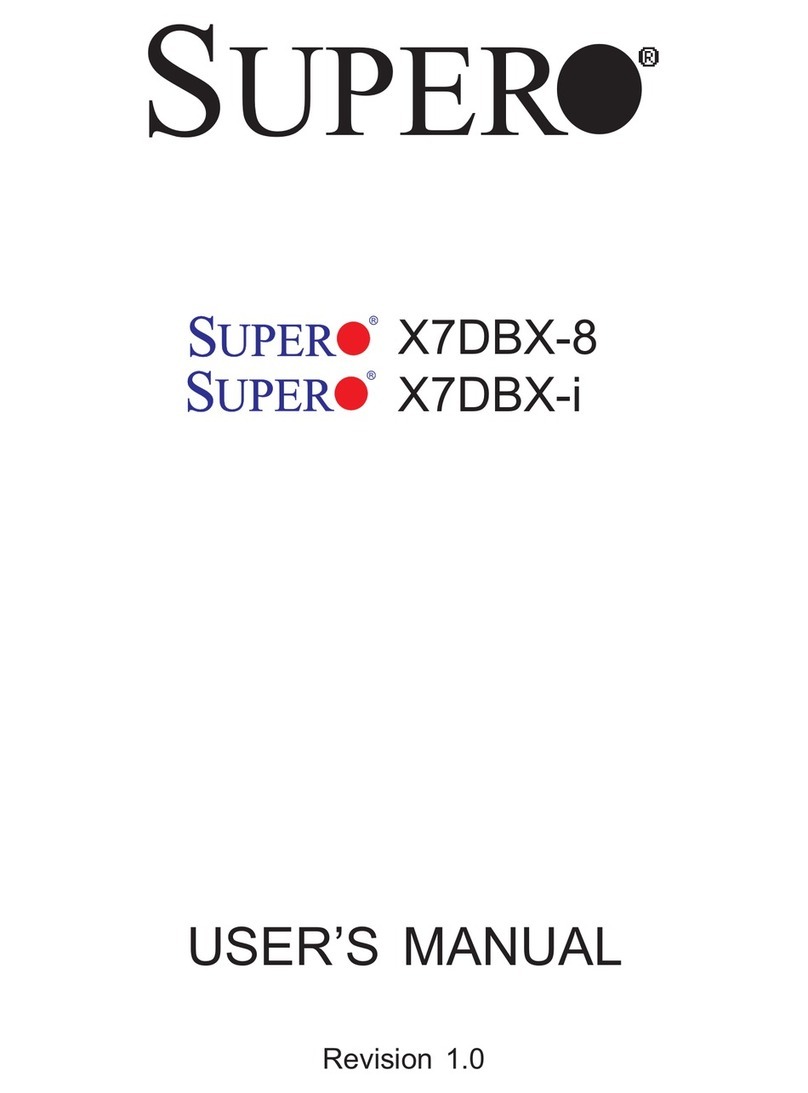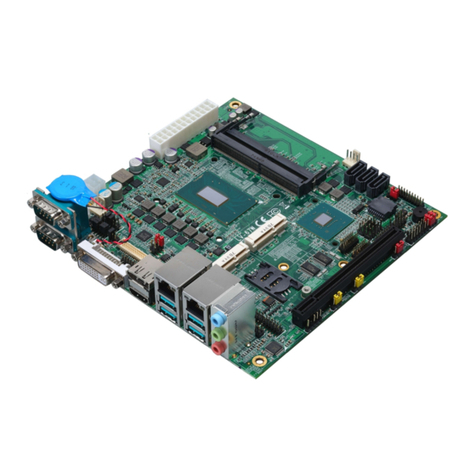
PCI-934 Technical Reference Manual
Read Me First 2
IMPORTANT INFORMATION
Before operating your Single Board Computer, please note the following:
Battery Configuration
Your computer board is equipped with a standard non-rechargeable lithium
battery. To preserve the useful life of the battery, the jumper which enables the
battery is not installed when you receive the board. If you need a jumper cap, we
suggest you use the one on the Watchdog Timer jumper since it is rarely needed; if
you wish to purchase jumper caps, you can contact TEKNOR’s Sales department
to order them.
Connecting Flat Panel Video Display
The PCI-934 board supports many different types of Flat Panel displays. TEKNOR has
fully tested a number of these panels and provides all the BIOS software support and the
technical information needed.
If you have access to the Internet, many video BIOS files in a binary format and related
interconnection charts in a PDF format are available on our web site. You can download
these files, if you are a customer of TEKNOR and have a password from TEKNOR. If
you do not have your password, contact TEKNOR’s Technical Support to obtain it.
To download a video BIOS file or its interconnection chart file, follow this procedure:
1. Access the TEKNOR web site. Our address is http://www.teknor.com .
2. Go to the Support & Services section.
3. Scroll down the list of products until you find the name of your board and click on it.
This selection is a link to the board’s support area.
4. Click on the Video BIOS link.
5. The list of tested Flat Panel displays appears. If you find your particular display, you
can then ask to download the associated BIOS or interconnection chart files by
clicking the appropriate link.
6. A pop-up window appears. You must enter your password (case sensitive) and click
the SUBMIT button. Entering your e-mail address is optional. Follow the
instructions in subsequent pop-ups to download the file.
If you do not have access to our web site, or if you do not see the name of your Flat
Panel, then you need to contact TEKNOR’s Technical Support department. Since we are
always testing new flat panels, it is possible that we have tested your particular type of
panel display. Even if we have not tested it, TEKNOR’s Technical Support can do it for
you and supply the video BIOS and the technical information you need.




















